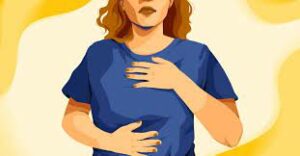Do you experience panic attacks? If so, you are not alone. OCD (obsessive-compulsive disorder) is a common mental illness that can cause panic attacks in people of all ages. In this blog post, we will discuss how to overcome OCD panic attacks. We will provide information on the signs and symptoms of a panic attack, as well as tips on how to deal with them.
Contents
What Are OCD Panic Attacks?

OCD Panics attacks are intense episodes of fear that occur when a person is faced with an overwhelming, uncontrollable, or highly irrational thought or situation. These panic attacks can cause physical symptoms such as shortness of breath and heart palpitations. They can also lead to feelings of hopelessness, helplessness, and extreme anxiety.
These panic attacks are a common symptom of Obsessive-Compulsive Disorder (OCD), which is an anxiety disorder characterized by intrusive and repetitive thoughts, behaviors, or rituals. People with OCD often experience overwhelming feelings of fear, panic, and dread when they are faced with situations or objects that trigger their obsessions.
Reasons For OCD Panic Attacks
The causes of OCD panic attacks are rooted in a person’s psychological state. People can experience the condition due to issues such as low self-esteem, past traumatic events, and environmental pressures. These factors can trigger an intense fear response that can lead to panic attacks.
These reasons for panic attacks can be further divided into several categories. For example, some people may find themselves in an overwhelming situation that triggers fear and worry. This fear can manifest as an OCD panic attack. Other times, a person’s deep-seated fears surrounding certain objects or situations can lead to an OCD panic attack. Regardless of the source, these intense feelings have the potential to create panic attacks.
Anxiety and fear can also lead to OCD panic attacks. Anxiety is a normal emotion but it can become overwhelming and interfere with daily life. Fear is often linked to anxiety, as it can cause the same physical response of increased heart rate, sweating, and shortness of breath. If these feelings are not properly managed or addressed, they may eventually manifest into an OCD panic attack.
Signs of OCD Panic Attacks

The signs of an OCD panic attack can vary from person to person, but common symptoms include: feeling overwhelmed and out of control; racing thoughts; physical discomforts such as:
Rapid Heart Attack
One of the most common signs of an OCD panic attack is a rapid heart rate. This can manifest as chest palpitations or simply feeling like your heart is racing. Also, you may feel short of breath or dizzy.
Feelings of Dread and Fear
Another common symptom is feeling intense fear or dread. This could be a fear of the unknown, scaring yourself with thoughts, or worrying about worst-case scenarios. The feeling can seem so real that it’s like the fear is happening in the present moment.
Obsessive Thoughts and Behaviors
With OCD panic attacks, people often experience repetitive and intrusive thoughts that they are unable to control. These obsessive thoughts might involve themes such as contamination, perfectionism, violence, and religion. People might also engage in compulsive behaviors––such as checking locks multiple times––to try to reduce their anxiety.
Nausea and Stomach Issues
Some people experience nausea and stomach issues during an OCD panic attack, such as feeling bloated or having abdominal pain. When anxiety is high, the body reacts by releasing certain hormones that can cause digestive upset.
Sweating and Shaking
The fear associated with the panic attack can cause sweating and shaking, which may be more intense than usual for some individuals. Swallowing may become difficult, and people might also experience trembling or tingling in their limbs.
Shortness of Breath
Shortness of breath is another symptom that could occur during an OCD panic attack, making it difficult to catch one’s breath. Then, this can lead to more feelings of fear and panic.
Coping Mechanisms for OCD Panic Attacks

There are many strategies that people can use to cope with OCD panic attacks. The most important step is to recognize the symptoms before they become too severe. This allows individuals to take action to reduce their anxiety and lessen the impact of their panic attacks.
Fortunately, there are ways to manage and even overcome OCD panic attacks. Here are some tips for dealing with OCD panic attacks:
1. Recognize the signs of a panic attack. The first step in managing your panic attacks is to recognize the physical symptoms of an impending attack. Common signs include rapid heartbeat, sweating, trembling, nausea, dizziness, chest pain or tightness, and feeling detached from reality or unrealistically fearful.
2. Take deep breaths. Slow, deep breathing can help to reduce the physical symptoms of an OCD panic attack and can restore feelings of calmness. Focus on inhaling deeply and exhaling slowly. This will regulate your heart rate and help you relax.
3. Practice mindfulness meditation. Mindfulness meditation is a great way to focus on the present moment while focusing awareness on your body and breath. By doing this exercise regularly, you can increase your ability to handle difficult situations without panicking or becoming overwhelmed by anxiety.
4. Reach out for help from a mental health professional or support group if necessary If you find that your panic attacks are becoming too intense or persistent, it may be helpful to seek assistance from a mental health professional or support group. A therapist can provide tools and techniques that can help to reduce the intensity of panic attacks as well as any underlying causes.
5. Practice relaxation techniques. Relaxation techniques such as progressive muscle relaxation, guided imagery, and yoga can help reduce stress and anxiety levels that may be contributing to OCD panic attacks. Some relaxation techniques may even be used during a panic attack to help control the physical symptoms.
By recognizing the signs of an OCD panic attack, learning coping strategies and relaxation techniques, and practicing good self-care, it is possible to reduce the frequency and intensity of panic attacks. With the right support and treatment plan, individuals can learn how to manage their condition and live their lives without fear or worry.
Conclusion
OCD and panic attacks can be difficult to manage and overcome, but there are steps you can take to help reduce their frequency and impact. Learning healthy coping mechanisms such as relaxation techniques, mindfulness, cognitive-behavioral therapy, and positive self-talk can help you address the underlying triggers of OCD panic attacks. Additionally, talking to a mental health professional or participating in support groups can provide the support and resources needed to make progress in managing your symptoms. With patience, determination, and self-compassion, you can find relief from OCD panic attacks and live a fuller life.
By understanding the causes of OCD panic attacks and developing healthy strategies for coping with them, you can take back control of your emotions.
For more information and guidance, please contact OCDMantra. OCD is a mental health disorder characterized by obsessions and compulsions. If you have any queries regarding OCD treatment, ERP therapy experienced therapists at OCDMantra can help: Book a trial OD therapy session.


